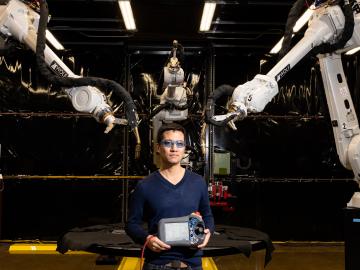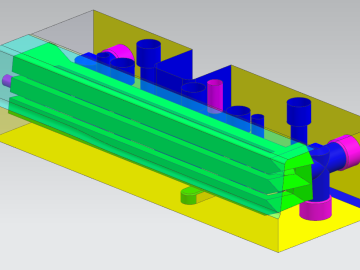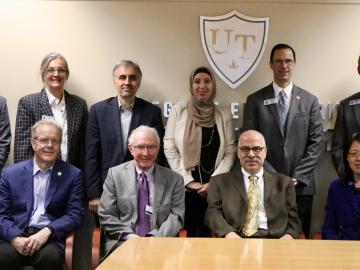
Filter News
Area of Research
- (-) Energy Science (178)
- Advanced Manufacturing (22)
- Biology and Environment (33)
- Biology and Soft Matter (1)
- Building Technologies (1)
- Computational Biology (1)
- Computer Science (1)
- Electricity and Smart Grid (2)
- Functional Materials for Energy (1)
- Fusion and Fission (9)
- Fusion Energy (1)
- Isotope Development and Production (1)
- Isotopes (27)
- Materials (95)
- Materials for Computing (18)
- National Security (25)
- Neutron Science (125)
- Nuclear Science and Technology (19)
- Quantum information Science (2)
- Supercomputing (37)
- Transportation Systems (2)
News Topics
- (-) 3-D Printing/Advanced Manufacturing (79)
- (-) Cybersecurity (8)
- (-) Fossil Energy (2)
- (-) Isotopes (1)
- (-) Microelectronics (1)
- (-) Neutron Science (11)
- (-) Polymers (11)
- (-) Space Exploration (3)
- (-) Transportation (66)
- Advanced Reactors (6)
- Artificial Intelligence (8)
- Big Data (5)
- Bioenergy (26)
- Biology (11)
- Biomedical (6)
- Biotechnology (4)
- Buildings (38)
- Chemical Sciences (14)
- Clean Water (8)
- Composites (17)
- Computer Science (25)
- Coronavirus (12)
- Critical Materials (9)
- Energy Storage (71)
- Environment (54)
- Exascale Computing (2)
- Frontier (2)
- Fusion (1)
- Grid (39)
- High-Performance Computing (6)
- Hydropower (3)
- Machine Learning (7)
- Materials (35)
- Materials Science (26)
- Mathematics (2)
- Mercury (3)
- Microscopy (8)
- Molten Salt (1)
- Nanotechnology (8)
- National Security (5)
- Nuclear Energy (7)
- Partnerships (12)
- Physics (1)
- Quantum Science (2)
- Security (6)
- Simulation (4)
- Statistics (1)
- Summit (4)
Media Contacts

Each year, approximately 6 billion gallons of fuel are wasted as vehicles wait at stop lights or sit in dense traffic with engines idling, according to US Department of Energy estimates.

Peter Wang is focused on robotics and automation at the Department of Energy’s Manufacturing Demonstration Facility at ORNL, working on high-profile projects such as the MedUSA, a large-scale hybrid additive manufacturing machine.

A technology developed at the ORNL and scaled up by Vertimass LLC to convert ethanol into fuels suitable for aviation, shipping and other heavy-duty applications can be price-competitive with conventional fuels

An international team of scientists, led by the University of Manchester, has developed a metal-organic framework, or MOF, material

ORNL researchers created and tested new wireless charging designs that may double the power density, resulting in a lighter weight system compared with existing technologies.

Researchers demonstrated that an additively manufactured hot stamping die can withstand up to 25,000 usage cycles, proving that this technique is a viable solution for production.

Researchers at the Department of Energy’s Oak Ridge National Laboratory have received five 2019 R&D 100 Awards, increasing the lab’s total to 221 since the award’s inception in 1963.

ORNL and The University of Toledo have entered into a memorandum of understanding for collaborative research.

Using the Titan supercomputer and the Spallation Neutron Source at the Department of Energy’s Oak Ridge National Laboratory, scientists have created the most accurate 3D model yet of an intrinsically disordered protein, revealing the ensemble of its atomic-level structures.

A modern, healthy transportation system is vital to the nation’s economic security and the American standard of living. The U.S. Department of Energy’s Oak Ridge National Laboratory (ORNL) is engaged in a broad portfolio of scientific research for improved mobility


